What can I say about the flipchart?
The connections between the work and cultural levels can be illustrated very well using an iceberg.
Working level
The working level is located above the surface of the water, as it can be easily seen from the outside. It primarily determines the "how" of the operational business. At this level, the first step is to create a framework that meets the requirements, such as Scrum, Kanban or Design Thinking to be introduced. Based on the selected framework, good practices should be adopted to support the daily work. Such as boards, burndown charts, user stories, story points, etc.
Frameworks and practices therefore make up the working level. In this context, we also speak of "doing agile". The frameworks are easy to understand. As a rule, a two-day workshop is required to set up an agile team. However, mastering this is a major challenge.
Cultural level
The Cultural level is located below the surface of the water, as it is not readily perceptible from the outside, but essentially determines attitude, actions and behavior. The five values from the Scrum Guide are essential for an agile culture:
- Courage,
- Openness,
- Focus,
- Respect and
- Self-commitment
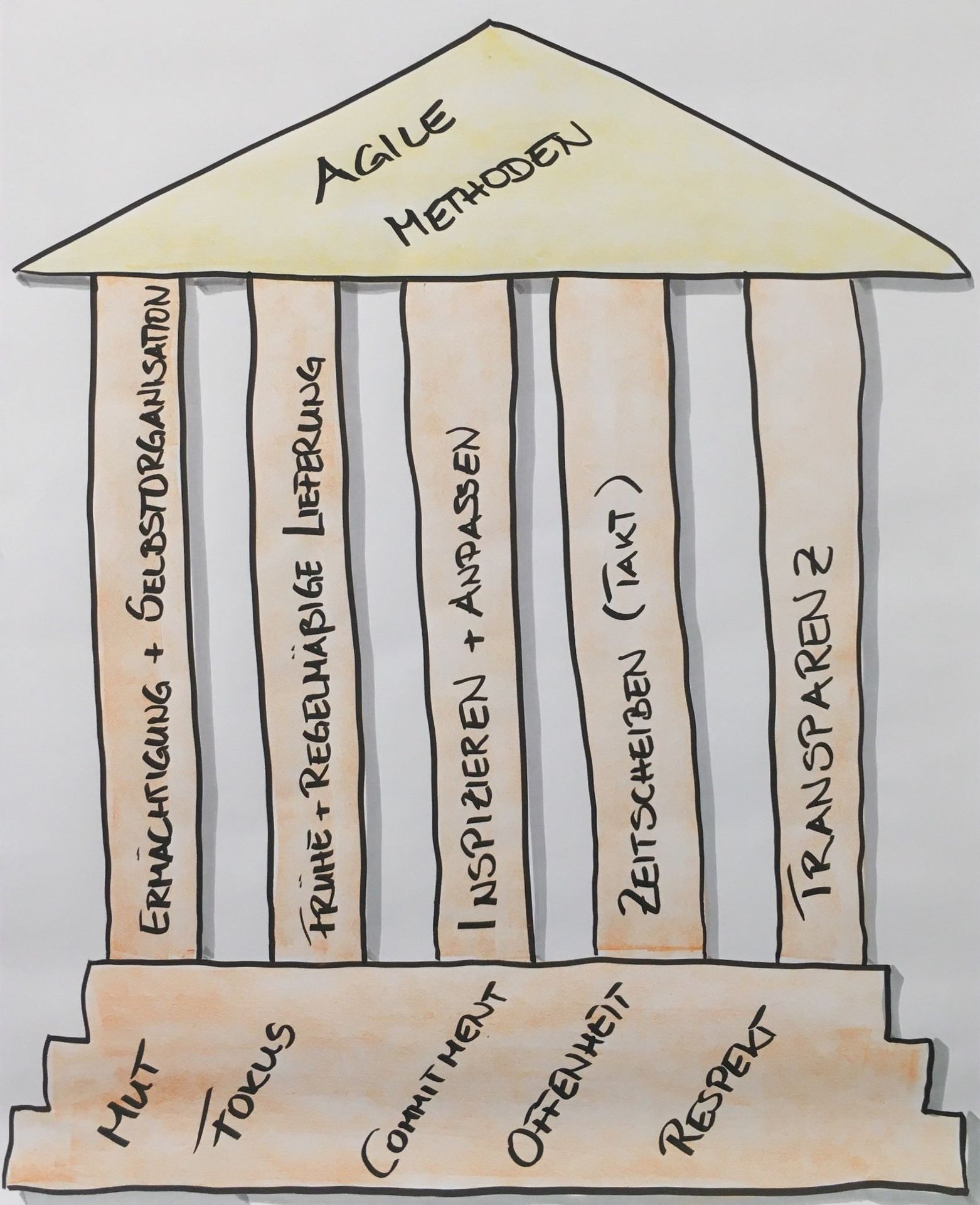
Based on these values, wibas believes that there are five key principles that guide agile action and behavior:
- Empowerment & self-organization,
- Early & regular delivery,
- Inspect & adjust,
- Transparency and tact.
Values and principles therefore make up the cultural level. In this context, we also speak of "being agile". Adopting, internalizing and living this culture is like embarking on a journey if you want to master the transition to agility.
Connections between work and cultural levels
Many attempts to introduce agility or to set up agile projects and plans usually fail because only the work level is considered and the culture behind it is not taken into account. Yet there are fundamental interactions between these two levels. Understanding this is crucial for the successful introduction and establishment of agile procedures. You should therefore always ask yourself how a framework or practice promotes the principles and values or which frameworks and practices should be used sensibly in order to be able to live the principles and values.
What does the flipchart finally look like?
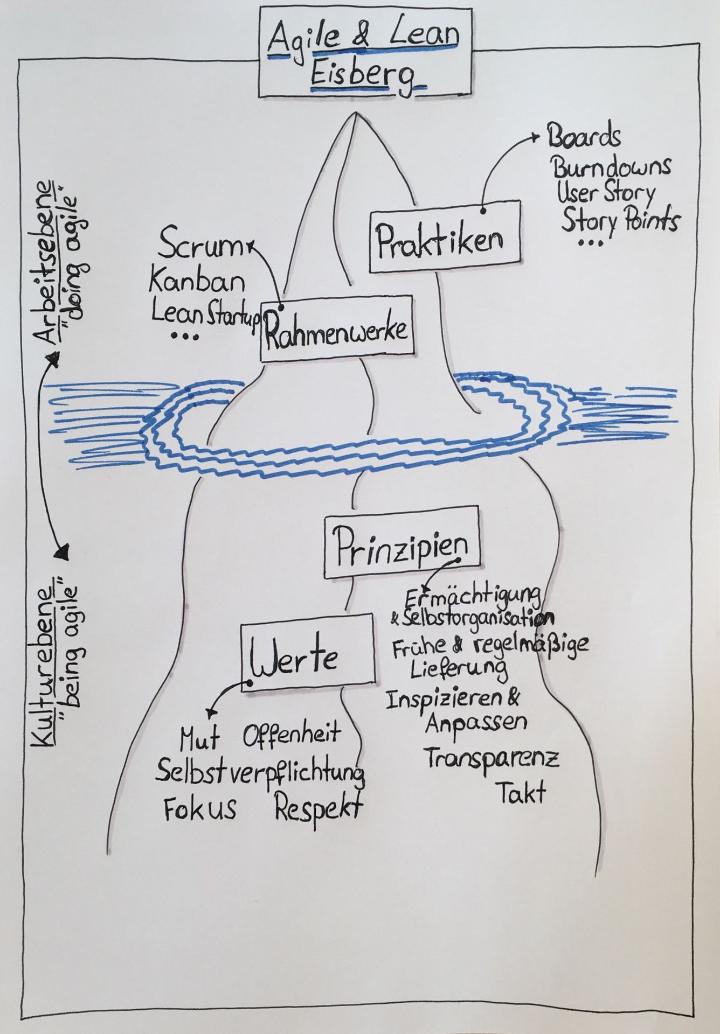
How can I set up the flipchart step by step?
You can set up and explain this flipchart in 3 steps. And this is how it works:
Step 1: Basic template
- Start your story with the basic template for the flipchart.
- Mention only the work and cultural level and explain the main points from the section "Why do you need this flipchart".
Step 2: Working level
- You continue to expand the flipchart along the narrative to the working level. The upper part of the iceberg is used for this.
- Add "Frameworks" and give the relevant examples that you would like to tell something additional about, such as Scrum.
- Add "practices" and use the examples to explain what practices are used for in an agile environment and how they differ from frameworks.
- Summarize your explanation of the work level at the end by adding "work level" and "doing agile".
Step 3: Cultural level
- You expand the flipchart further along the narrative to the cultural level. The lower part of the iceberg is used for this.
- Complete "Values" and explain the five values.
- Complete "Principles" and explain the five principles.
- Summarize your explanation of the cultural level at the end by adding "cultural level", "being agile" and the reciprocal arrow.

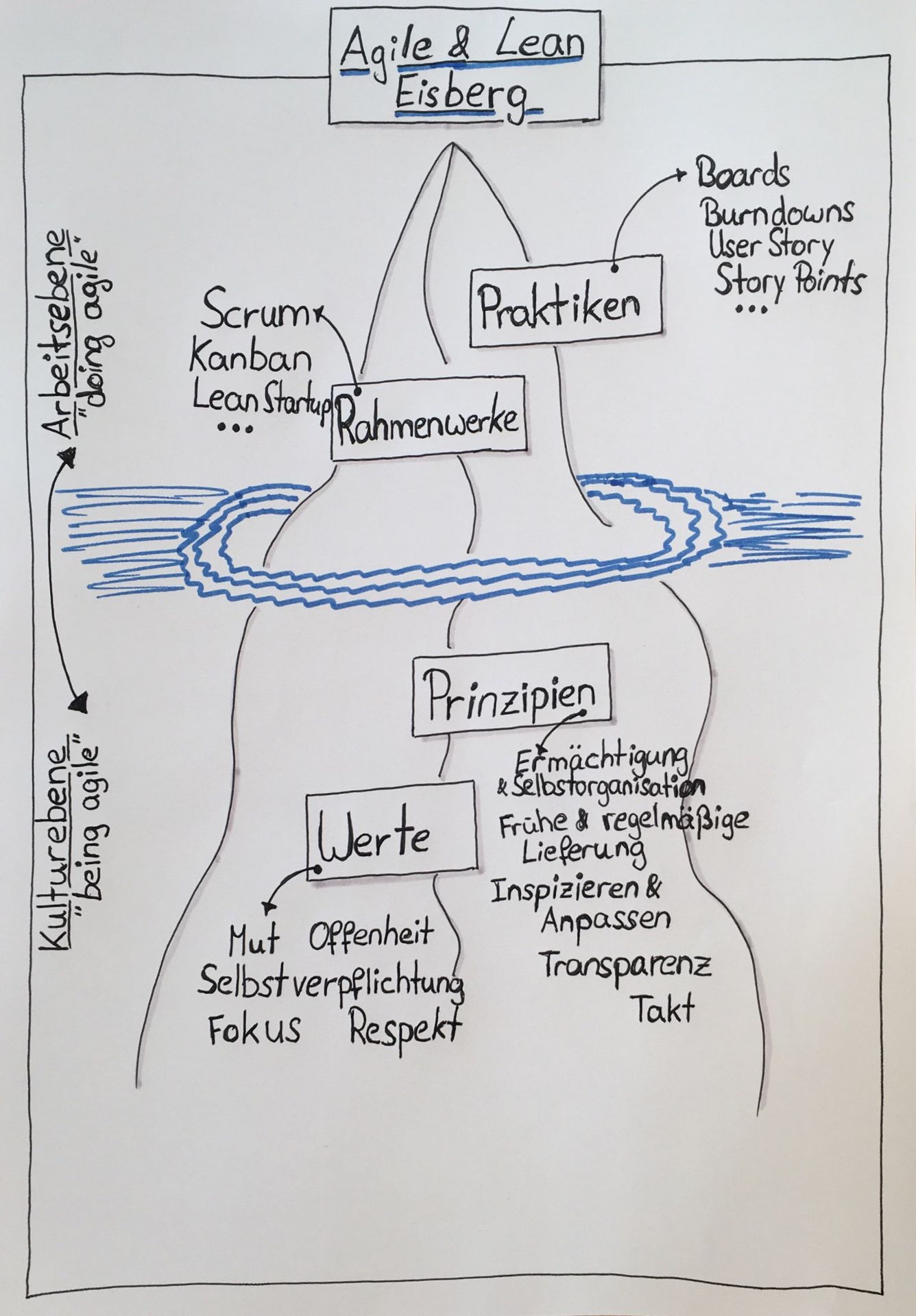
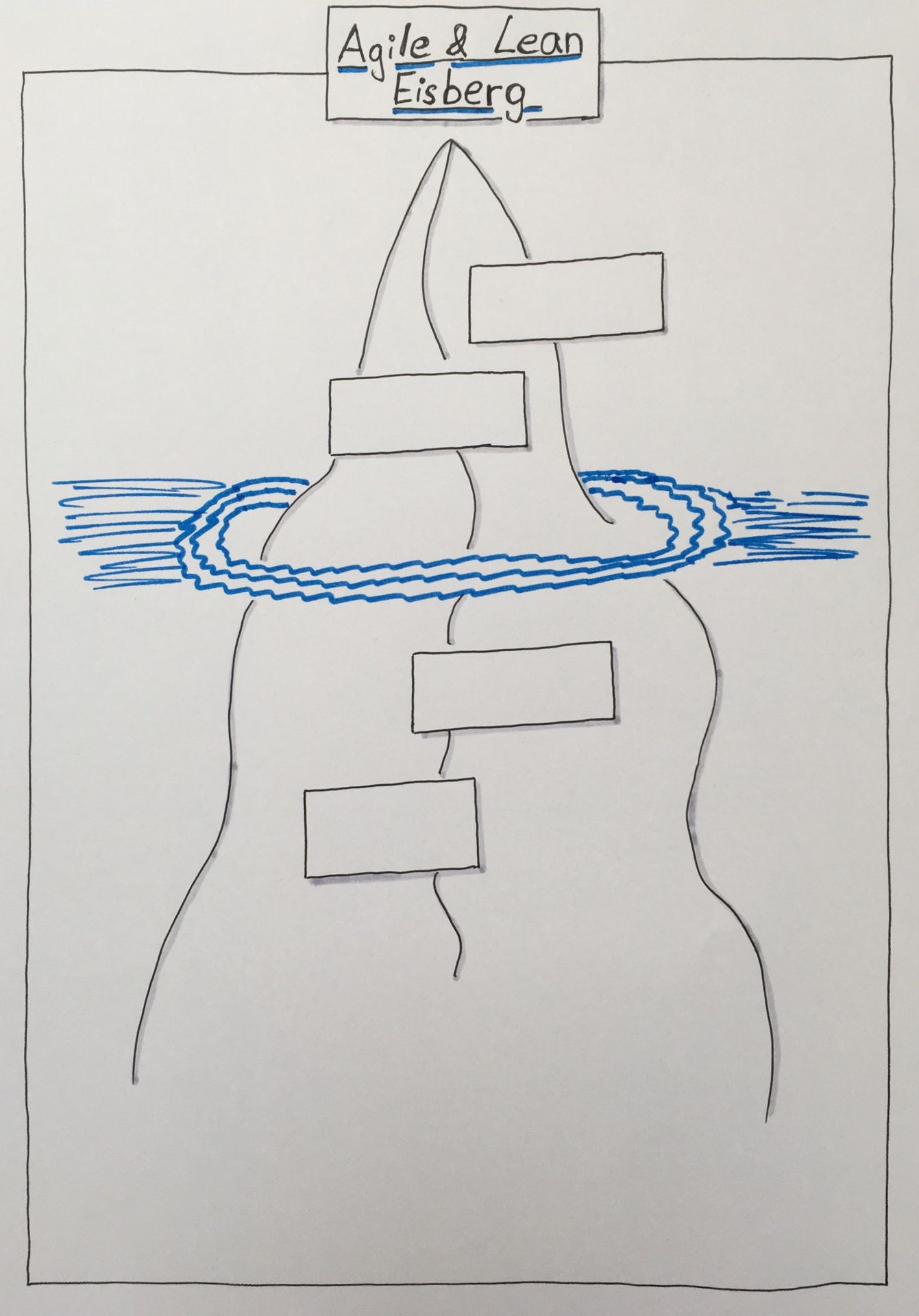
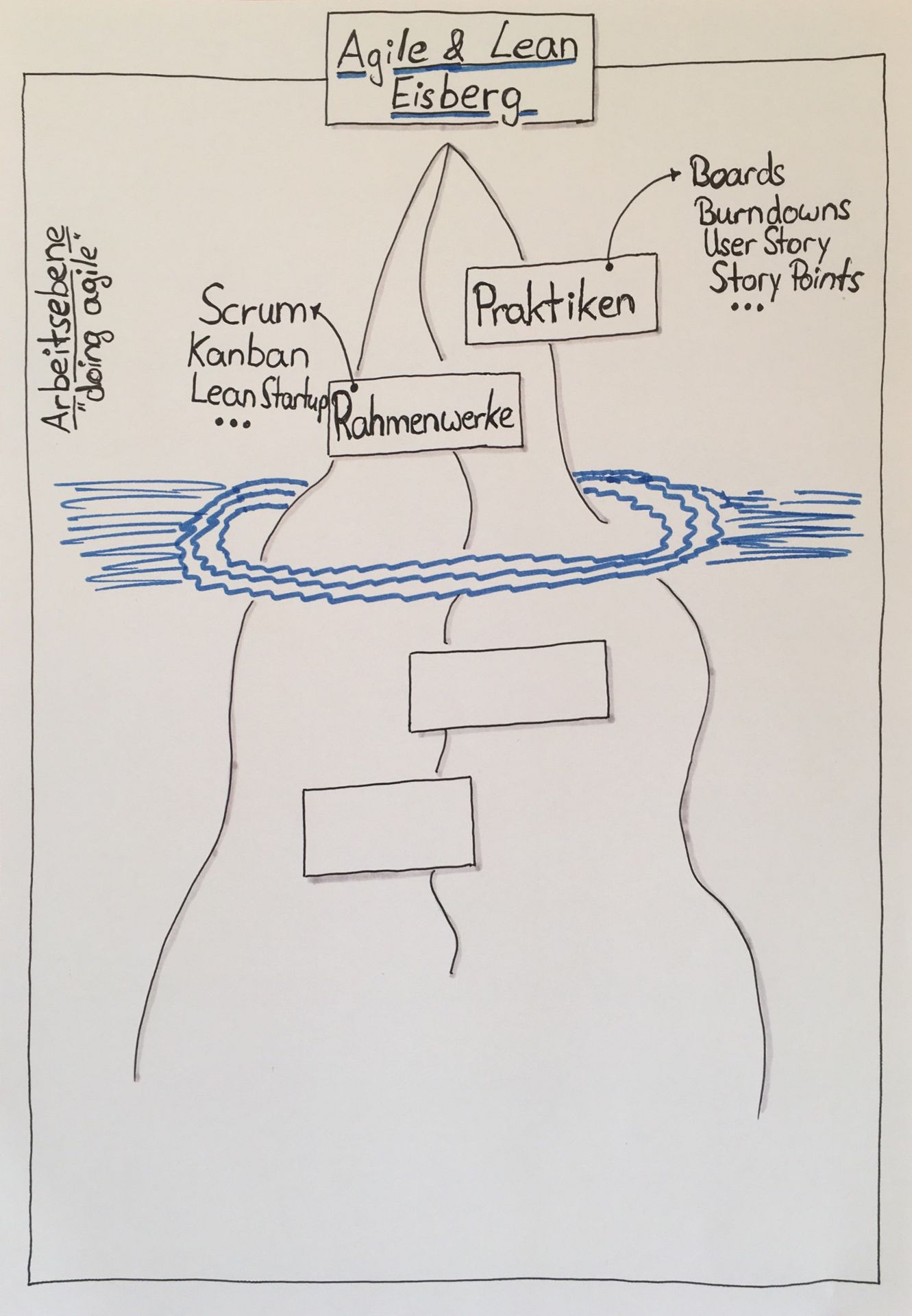
Write a comment